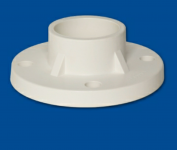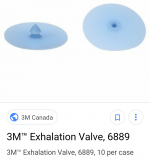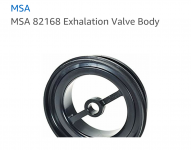Has anyone attempted active woofer cooling in vented cabinets with staggered vents to promote air flow?
Would be nice to have a small high xmax prosound sub that can use its full excursion in hot ambient temps with very little power compression. I've been testing a BMS 15N850 and it sure puts out impressive spl for 3ft cubed. After 20 mins I estimate a loss of 4-6db in 95 degree temps. Not as impressive at that point.
Would be nice to have a small high xmax prosound sub that can use its full excursion in hot ambient temps with very little power compression. I've been testing a BMS 15N850 and it sure puts out impressive spl for 3ft cubed. After 20 mins I estimate a loss of 4-6db in 95 degree temps. Not as impressive at that point.
Last edited:
I thought of installing a mini-ductless AC unit. A small freezer evaporator inside the sub with a condenser coil, compressor and on the outside and lines going through the box. You would have to be EPA 608 certified (at least in the US) to do that, but if you are it would be extremely effective.
Basket out of enclosure (reverse mount).
Would never have thought of that !
But don't forget to reverse speaker wires if you do it.
It might be used up to 500hz or so at times. Thought about port placement directly behind the magnet. That certainly would be effective at getting air across although there might be a bit of mid coloration when crossed high.
AC would be cool....but maybe a bit too much complexity for portable applications.
That sub fan video looks like what I have in mind. Would probably opt for a 140mm fan blowing at the back directly into the gap vents. Noctua has a nice one with 158CFM and only 42db. I do wonder if it'll create a forward cone offset with that much air. Maybe angled beneath the magnet at 45 degrees or so will be a good compromise.
Must try it out.
Thanks for the advice.
AC would be cool....but maybe a bit too much complexity for portable applications.
That sub fan video looks like what I have in mind. Would probably opt for a 140mm fan blowing at the back directly into the gap vents. Noctua has a nice one with 158CFM and only 42db. I do wonder if it'll create a forward cone offset with that much air. Maybe angled beneath the magnet at 45 degrees or so will be a good compromise.
Must try it out.
Thanks for the advice.
Very hot to the touch actually. Surprised(scared) me. Did measurements afterwards to see if it was still in spec. So much clean excursion on tap that you can easily get carried away with an extra 3db or more power. Tested outdoors and listened to about 100ft away as I did yard work.
I considered a heat sink as well. I would have to use undersized ports to get enough air exchange which of course is counterproductive for port output. I would like to keep vent velocity down as much as possible.
It's quite tempting to put a fan so that 127db can be maintained down to 50hz in a package small enough to fit in a small coupe...also fun for catching unsuspecting band mates off guard when used as a bass rig.
I considered a heat sink as well. I would have to use undersized ports to get enough air exchange which of course is counterproductive for port output. I would like to keep vent velocity down as much as possible.
It's quite tempting to put a fan so that 127db can be maintained down to 50hz in a package small enough to fit in a small coupe...also fun for catching unsuspecting band mates off guard when used as a bass rig.
If you design a vented box so that the vents are located above and below the woofer, heat should be removed from the enclosure by convection. I'm not sure however that the process will be fast enough to wick enough heat aware from the subwoofer.
I would not stick any sort of fan into the under-spider venting - those may impact the performance of the driver.
Water-cooling might work. Basically water-cool the magnet, so it wicks heat away from the coil more quickly. Bazooka actually used to sell a water-cooling solution some years back.
I would not stick any sort of fan into the under-spider venting - those may impact the performance of the driver.
Water-cooling might work. Basically water-cool the magnet, so it wicks heat away from the coil more quickly. Bazooka actually used to sell a water-cooling solution some years back.
100w of power into a TEC will move about 50w of heat. Of course you just put 100w of heat into the cab unless you bring it out somehow. Which would likely mean plumbing. So using PC CPU cooling blocks and an external radiator might be more use. A bit messy though.
Black bodies radiate much better, so some fins glued on the magnet with thermal epoxy, and a lick of black paint, could make quite some difference. Fins will resonate though, so something decent.
Passive cpu coolers are interesting. The heat pipe ones. Where fluid within the pips is actually evaporating off, climbing the pipe, and condensing at the top. Before running back down again. These pipes are usually under some sort of vacuum when sealed, so less exotic fluids can be used. I believe it's within the scope of diy. A £10 eBay cooler can manage a 100w cpu. Though it's only offering parts.
Black bodies radiate much better, so some fins glued on the magnet with thermal epoxy, and a lick of black paint, could make quite some difference. Fins will resonate though, so something decent.
Passive cpu coolers are interesting. The heat pipe ones. Where fluid within the pips is actually evaporating off, climbing the pipe, and condensing at the top. Before running back down again. These pipes are usually under some sort of vacuum when sealed, so less exotic fluids can be used. I believe it's within the scope of diy. A £10 eBay cooler can manage a 100w cpu. Though it's only offering parts.
In order for this to be highly effective and efficient you need air flow across the voice coil. Magnet cooling might be practical especially with NdFeBr from a protection standpoint, but far as managing voice coil temperature this way you're obviously late to the party. Without some sort of heat pump you have to appreciate widened temperature differentials wherever they naturally occur. Totally passive cooling works but with respect to bass reflex you have the problem where although ducted port flow increases around tuning frequency, the dustcap pumping almost stops there. It seems reasonable to think about adding a fan, but having it be very effective is unlikely barring totally hacking production motors or designing from the ground up with this in mind. Machining an assembled and magnetized motor would be a complete mess. Most commercial attempts to vent pressure under the gap aren't very aggressive and are designed for very low volume, recycling flow, not through-flow. One of the best off the shelf magnet designs, to my knowledge, for applying forced air VC cooling is the old JBL 2226. You can rip off the dust cap and actually blow air over the coil through the pole piece. With some significant reconfiguration it would be possible to have the inlet and exhaust through the back and have a driver with an intact dust cap. Maybe this can be someone's new commercial venture, in yet another market where size perennially matters.
I initially wanted to put the fan on a short tunnel at the rear of the motor and either suck or blow air out. Pressure behind the dustcap does have me worried though. Not too keen on cutting out the dustcap....yet. Heatsinks would be for insurance as I already have them on hand. I'm guessing the voicecoil would fry before the magnets though.
The fans aren't too costly. Will try it anyways and see/hear/measure what kind of effect it has.
The fans aren't too costly. Will try it anyways and see/hear/measure what kind of effect it has.
Last edited:
Ok since no one's interest was piqued when i mentioned forced passive magnet cooling, i will give a brief description.
You need (1) blank terminal cup 4" ×4", (1) exhalation valve body with flat valve, (1) pvc solvent weld flange, and a length of either pvc or flexible tubing to match the inner flange size and inlet of the exhalation valve body. Try to gey the exhalation valve body with the radial seat that has at least 4-6 arms (more even disc loading.
Attach flange to back of magnet centered over pole piece vent with small amount of high temp rtv silicone.
Drill terminal cup so exhalation valve body will fit snug and silicone it in, let all silicone dry 24 hrs. Mount terminal cup on enclosure at spot of your choice, i mount them on the back. Connect the pipe or tube between both.
I mount the exhalation valve body so the valve disc is on the outer side of the body so the air will be drawn thru the boxes port,into the magnet assembly thru the spider (or basket vent holes) and then it makes its way past the voice coil exiting thru the pole piece vent shaft.
Since the exhalation valve is basically a one way check valve,on every back stroke of the woofer cone it pumps the heated air thru the tube and out the back of the box venting the woofer.
Now theres several ways to do this including having the exhalation valve body reversed so fresh air is drawn from behind the box into it but thats up to you. Since the flat exhalation valve is silicone and very light it does not take much to move it and it opens easily and provides a good closing seal on the forward stroke of the woofer.
I have obtained sump pump check valves with the flat disc before ,so its easier to connect to the pipe/tube. Just make sure you dont use a swing type check as its too heavy for the air flow and won't work.
Keeps the coils refreshed nicely and is passive so no wiring.
I'll attach pics of the parts.
And oh yes , as andrew mentioned it will be minimally effective at fb so if you have a certain music genre you play,anylyze the low frequencies and tune the box 8hz lower than the predominant bass frequency so the magnet vent will be maximally effective.
And as well, its usually better to have a valve (1) size bigger than the magnet vent hole to lessen any noise, as a bigger valve body will let more air thru.
Experiment and try it.
You need (1) blank terminal cup 4" ×4", (1) exhalation valve body with flat valve, (1) pvc solvent weld flange, and a length of either pvc or flexible tubing to match the inner flange size and inlet of the exhalation valve body. Try to gey the exhalation valve body with the radial seat that has at least 4-6 arms (more even disc loading.
Attach flange to back of magnet centered over pole piece vent with small amount of high temp rtv silicone.
Drill terminal cup so exhalation valve body will fit snug and silicone it in, let all silicone dry 24 hrs. Mount terminal cup on enclosure at spot of your choice, i mount them on the back. Connect the pipe or tube between both.
I mount the exhalation valve body so the valve disc is on the outer side of the body so the air will be drawn thru the boxes port,into the magnet assembly thru the spider (or basket vent holes) and then it makes its way past the voice coil exiting thru the pole piece vent shaft.
Since the exhalation valve is basically a one way check valve,on every back stroke of the woofer cone it pumps the heated air thru the tube and out the back of the box venting the woofer.
Now theres several ways to do this including having the exhalation valve body reversed so fresh air is drawn from behind the box into it but thats up to you. Since the flat exhalation valve is silicone and very light it does not take much to move it and it opens easily and provides a good closing seal on the forward stroke of the woofer.
I have obtained sump pump check valves with the flat disc before ,so its easier to connect to the pipe/tube. Just make sure you dont use a swing type check as its too heavy for the air flow and won't work.
Keeps the coils refreshed nicely and is passive so no wiring.
I'll attach pics of the parts.
And oh yes , as andrew mentioned it will be minimally effective at fb so if you have a certain music genre you play,anylyze the low frequencies and tune the box 8hz lower than the predominant bass frequency so the magnet vent will be maximally effective.
And as well, its usually better to have a valve (1) size bigger than the magnet vent hole to lessen any noise, as a bigger valve body will let more air thru.
Experiment and try it.
Attachments
Last edited:
Water-cooling might work. Basically water-cool the magnet, so it wicks heat away from the coil more quickly. Bazooka actually used to sell a water-cooling solution some years back.
Perhaps a water cooled plate glued to the pole piece, and also perhaps a heat exchanger made out of an automotive AC evaporator coil and fan inside each speaker cab. I could envision plumbing circulated ice water to a whole stack of subwoofer cabs. Periodically add a bag of ice or two to the 55 gallon barrel, running the overflow out onto the lawn. “No, that ice isn’t for the margaritas it’s for cooling the speakers!”
Ok since no one's interest was piqued when i mentioned forced passive magnet cooling, i will give a brief description.....
Wasn't quite sure what you meant by forced passive magnet cooling at first, but it sounds much more effective than oscillating hot air back and forth inside the box.
Thanks for sharing details.
Subwoofer with heat sink that protrudes out of the box AudioRoundTable.com: Pi Speakers => Woofer Cooling
I remember that thread. Seems to work pretty well for small sealed boxes.
I've settled on a 60cfm Noctua fan mounted at the rear of the box to a flexible hose at an angle sealed to the back of the motor. It will suck air out the back pulling fresh air from under the spider. The under spider venting is fairly substantial so I'm hoping there won't be enough suction to create an offset. I can lower the speed if necessary if there is.
The forced passive magnet cooling idea is very cool as well. I'll play with that idea in a future project.
I've settled on a 60cfm Noctua fan mounted at the rear of the box to a flexible hose at an angle sealed to the back of the motor. It will suck air out the back pulling fresh air from under the spider. The under spider venting is fairly substantial so I'm hoping there won't be enough suction to create an offset. I can lower the speed if necessary if there is.
The forced passive magnet cooling idea is very cool as well. I'll play with that idea in a future project.
- Status
- This old topic is closed. If you want to reopen this topic, contact a moderator using the "Report Post" button.
- Home
- Loudspeakers
- Subwoofers
- Fan cooled drivers?


